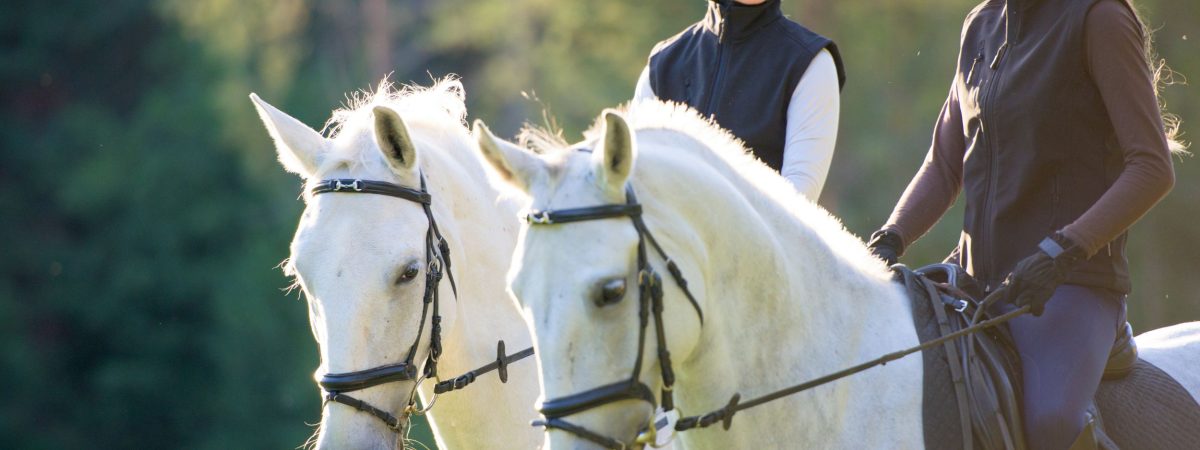As an equestrian instructor, you play a pivotal role in shaping the development and fulfillment of your horseriders. Your expertise, guidance, and passion for horses serve as catalysts for their progress, empowering them to excel in this captivating discipline. This comprehensive guide is designed to equip you with the tools and strategies necessary to effectively and swiftly advance your horseriders, transforming each into an accomplished horserider and a lifelong equine enthusiast.
1. Cultivating a positive and stimulating learning environment
Foster the growth and progression of your horseriders by cultivating a positive and stimulating learning environment.
Transform the stable into a haven of tranquility and mutual respect. Establish a welcoming atmosphere where everyone feels valued, safe, and comfortable to express themselves and progress. Encourage open and constructive communication around equestrian practice.
Give your horseriders a voice, invite them to ask questions, share their feelings, thoughts, and experiences, even after a fall.
Within this positive framework, your horseriders will find the motivation to fully invest in their equestrian learning. They will be stimulated to progress at their own pace, push their limits, develop their relationship with their horse, and flourish in equestrian practice.
2. Individualizing your instruction to suit each horserider level and needs
Recognize the uniqueness of each horserider and adapt your pedagogical approach accordingly. Take the time to assess their level, goals, and equestrian dreams.
Every horserider is unique, and your teaching should be as well. Offer personalized riding exercises and challenges that will allow them to progress at their own pace and feel valued.
3. Laying a solid foundation for safe equestrian practice
Your horseriders must master the technical fundamentals. Lay a solid foundation for safe equestrian practice.
Guide your horseriders towards a correct position on the horse, an essential foundation for harmonious communication with their mount. Teach them how to observe the horse to understand its body language and better anticipate its reactions while building a trusting relationship.
Safety, an absolute priority, must be at the heart of your teaching. Instill in your horseriders the essential principles of horse control, equip them to deal with potentially dangerous situations, and raise their awareness of the basic rules that ensure a serene and responsible practice.
4. Embracing variety in mounts and disciplines
Introduce horseriders to different horse breeds. They will thus be able to familiarize themselves with the different gaits, temperaments, and morphologies of horses.
Introduce horseriders to other equestrian disciplines, such as endurance, driving, or ethology. This will allow them to diversify their skills and discover new ways to practice riding.
Offer both group and private lessons. Group lessons allow horseriders to progress together and motivate each other, while private lessons provide personalized instruction tailored to the needs of each horserider.
5. Nurturing your horseriders’ progress with constructive and personalized feedback
Guide them with precise and objective feedback, highlighting their strengths and areas for improvement. Encourage them to analyze their performance and reflect on their own progress. Offer concrete solutions and exercises to correct mistakes and promote learning. Adapt your advice to the needs and learning style of each horseriders.
6. Cultivating teamwork and camaraderie for your horseriders to flourish together
Equestrianism is a collective adventure. Foster teamwork by organizing activities and exercises that encourage collaboration, mutual respect, and mutual aid.
Offer team challenges, horseback games, and collaborative obstacle courses. Unleash the creativity and cohesion of the groups by imagining original and fun scenarios.
Encourage exchanges and discussions between horseriders. Foster a climate of trust where everyone feels comfortable sharing their feelings, experiences, and questions.
Organize social events outside of lessons. Barbecues, themed evenings, or movie outings will allow horseriders to get together in a convivial setting and strengthen their friendships.
Teamwork and camaraderie are not only important values in the world of sport, but also key elements for personal fulfillment. By cultivating these values within your stable, you contribute to creating a positive and stimulating environment where your horseriders feel supported, valued, and happy to pursue their passion.
7. Cultivating motivation and enthusiasm by celebrating your horseriders’ achievements and progress
Recognize and value individual and collective efforts. Congratulate each horserider on their progress, no matter how small.
Encourage them to set personal goals and track their progress with pride. Celebrate individual and collective successes. Organize special events, award symbolic rewards, or grant privileges to highlight your horseriders’ accomplishments.
Transform each session into an opportunity to celebrate progress. Applaud efforts, self-improvement, and moments of complicity between horseriders and horses.
8. Nourishing your passion and developing your instructional skills to offer the best possible experience to your horseriders
To remain at the forefront of your craft and provide exceptional instruction to your horseriders, a commitment to continuous professional development is paramount. Embark on a journey of lifelong learning by actively seeking opportunities to enhance your expertise and refine your pedagogical approach.
1. Engage in Specialized Training and Workshops:
- • Attend instructor-focused equestrian training courses, workshops, and conferences. These gatherings provide a wealth of knowledge and insights from experienced professionals, allowing you to deepen your technical and pedagogical understanding.
- • Discover innovative teaching methods and stay abreast of the latest trends in the equestrian world. By expanding your repertoire of teaching techniques, you can effectively cater to the diverse needs and learning styles of your students.
2. Foster Collaboration and Knowledge Exchange:
- • Connect with fellow instructors and equestrian professionals. Engage in meaningful exchanges of experiences, share your unique perspectives, and seek guidance from seasoned practitioners.
- • Participate in online forums and communities dedicated to equestrian instruction. Engage in discussions, pose questions, and collaborate with a global network of instructors to gain valuable insights and broaden your horizons.
3. Delve into Equestrian Literature and Research:
- • Read books, articles, and specialized journals focused on equestrian pedagogy. Stay informed about the latest research findings and innovative approaches to enhance your teaching effectiveness.
- • Explore advancements in learning theories and techniques specifically tailored to equestrian education. Continuously update your knowledge base to incorporate the most effective and engaging teaching methodologies.
By embracing continuous learning and professional development, you elevate your instructional skills, enabling you to provide your horseriders with the highest quality of equestrian education. Your commitment to excellence will foster their personal growth, accelerate their progress, and ignite a lifelong passion for the equestrian arts.
Remember, as an equestrian instructor, you play a pivotal role in shaping the future of your students. Your dedication to continuous learning and passion for teaching will empower them to reach their full potential and experience the profound joy of connecting with horses. Together, you will embark on a remarkable journey of equestrian excellence.
9. Elevate your horseriders’ learning and accelerate their progress with video analysis using NICECAM
Video analysis is a revolutionary tool that empowers you to provide your horseriders with personalized and accelerated learning. Through innovative platforms like NICECAM, you gain access to a comprehensive suite of tools for in-depth analysis of your horseriders’ individual and collective performances.
NICECAM unlocks the door to a detailed and precise analysis of posture, aids, and the relationship between the horserider and their horse. You can accurately identify each horseriders’ strengths and areas for improvement, designing personalized training strategies that precisely meet their needs.
Here are some concrete examples of how video analysis with NICECAM can enhance your teaching:
- • Analyze the horserider’s position on horseback: Identify imbalances, poor posture, and tension that can limit the horserider’s performance and hinder their well-being.
- • Decipher the relationship between the horserider and the horse: Understand the subtle interactions between the horserider and their mount, identify sources of misunderstanding, and foster a harmonious relationship.
- • Track your horseriders’ progress: Compare riders’ videos over time to measure their technical development and individual progress.
- • Create personalized teaching materials: Use video captures to illustrate your corrections and advice, and share them with your horseriders for individualized learning.
Video analysis offers a vast array of possibilities to enrich your teaching and propel your riders to new heights. By integrating this powerful tool into your practice, you contribute to their personal fulfillment, accelerated progress, and growing passion for equestrianism.
Remember, every rider is unique and progresses at their own pace. Your role as an instructor is to guide them with patience, encouragement, and kindness throughout their equestrian journey. Inspire them, motivate them, and accompany them with passion as they discover the wonderful world of horse riding. Together, you will accomplish great things!

